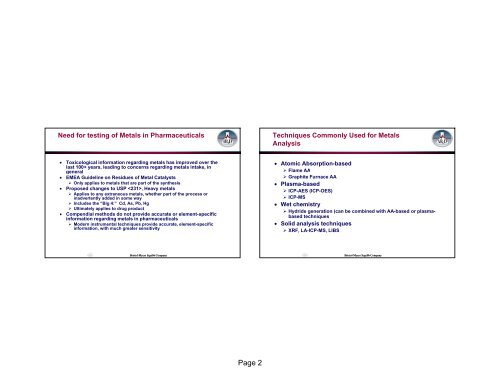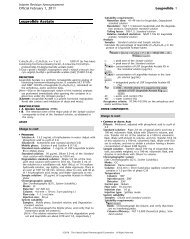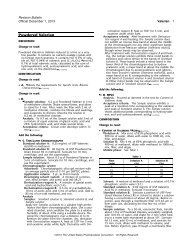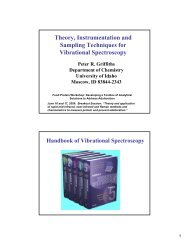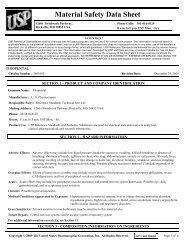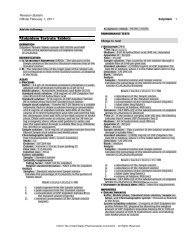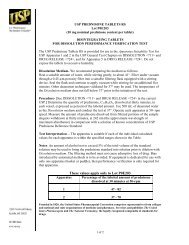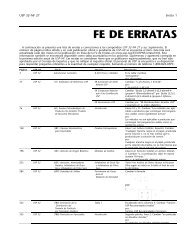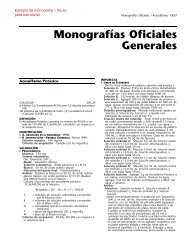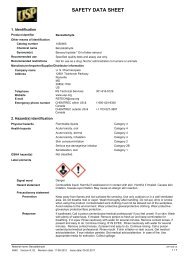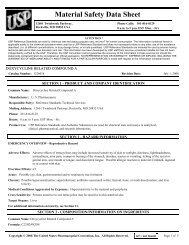Day 1 - US Pharmacopeial Convention
Day 1 - US Pharmacopeial Convention
Day 1 - US Pharmacopeial Convention
Create successful ePaper yourself
Turn your PDF publications into a flip-book with our unique Google optimized e-Paper software.
Need for testing of Metals in Pharmaceuticals<br />
• Toxicological information regarding metals has improved over the<br />
last 100+ years, leading to concerns regarding metals intake, in<br />
general<br />
• EMEA Guideline on Residues of Metal Catalysts<br />
� Only applies to metals that are part of the synthesis<br />
• Proposed changes to <strong>US</strong>P , Heavy metals<br />
� Applies to any extraneous metals, whether part of the process or<br />
inadvertently added in some way<br />
� Includes the “Big 4:” Cd, As, Pb, Hg<br />
� Ultimately applies to drug product<br />
• Compendial methods do not provide accurate or element-specific<br />
information regarding metals in pharmaceuticals<br />
� Modern instrumental techniques provide accurate, element-specific<br />
information, with much greater sensitivity<br />
Bristol Bristol-Myers Myers Squibb Company<br />
Page 2<br />
Techniques Commonly Used for Metals<br />
Analysis<br />
• Atomic Absorption-based<br />
�� Flame AA<br />
� Graphite Furnace AA<br />
• Plasma-based<br />
� ICP-AES (ICP-OES)<br />
� ICP-MS<br />
• Wet chemistry<br />
� Hydride generation (can be combined with AA-based or plasmabbased<br />
d techniques<br />
t h i<br />
• Solid analysis techniques<br />
� XRF, LA-ICP-MS, LIBS<br />
Bristol Bristol-Myers Myers Squibb Company


